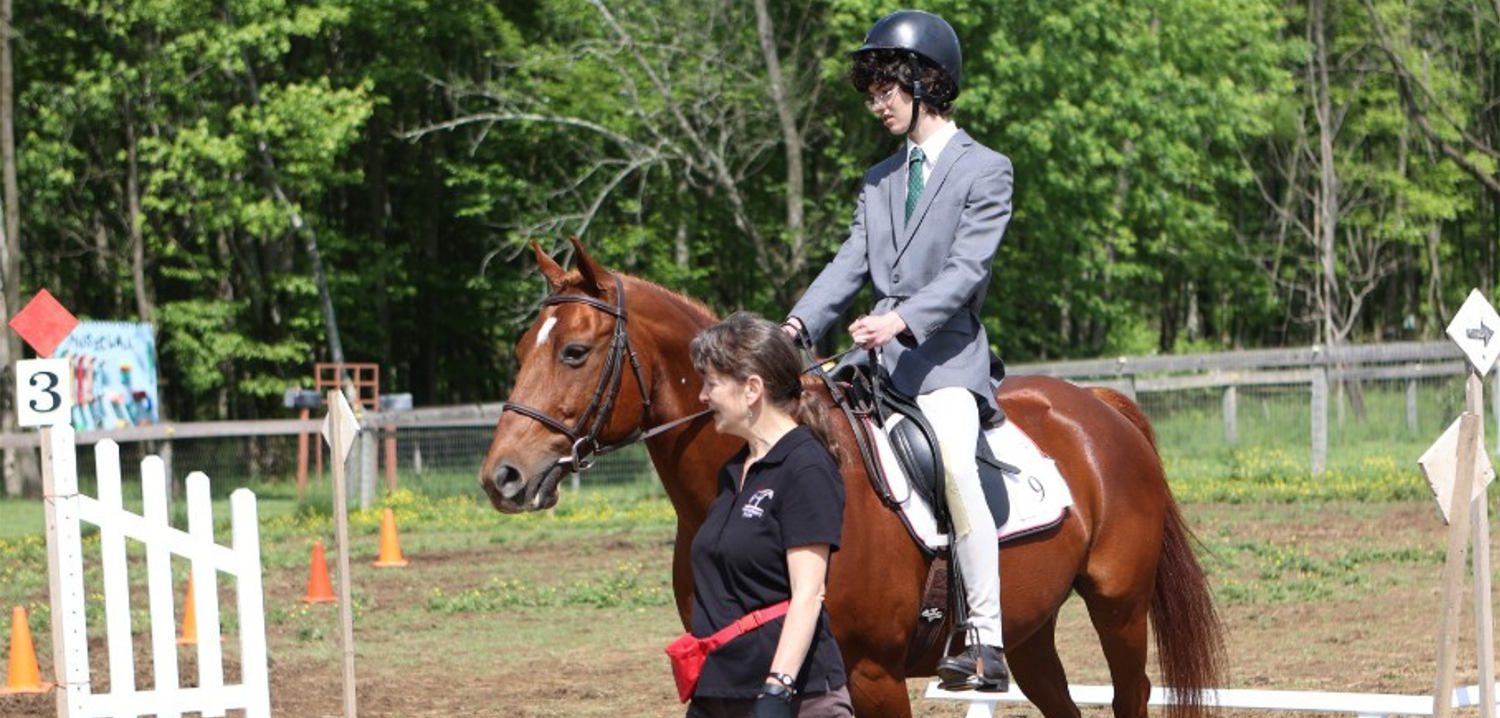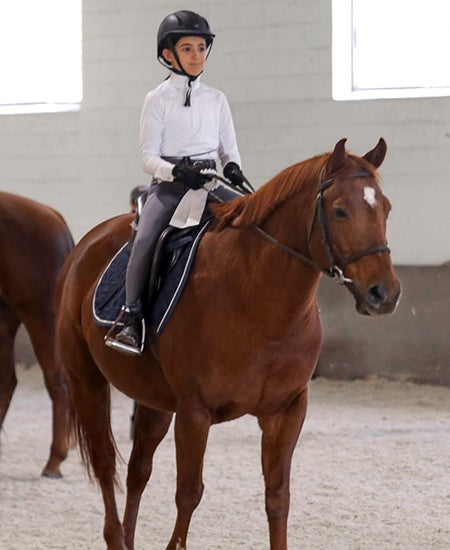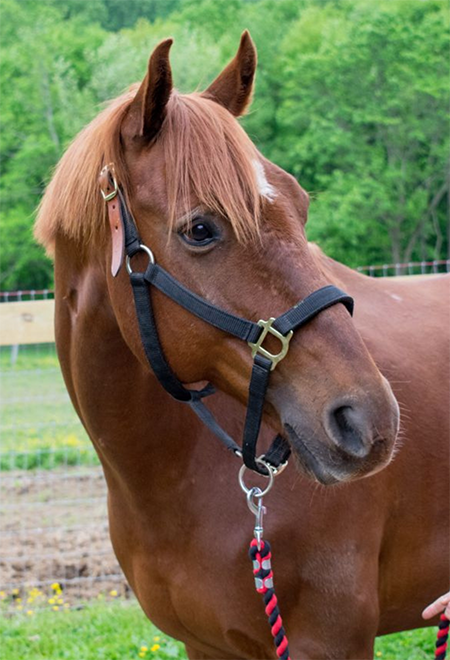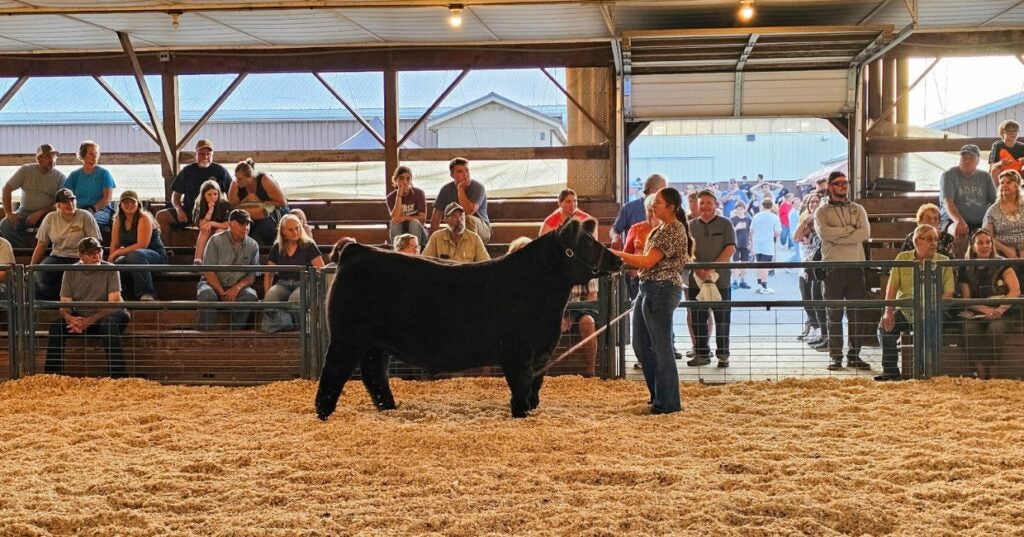Advanced Robotic Imaging Help Rusty the Therapy Horse Avoid Surgery

Faculty In This Story
Since 2018, Rusty has been a steady, trusted partner at Thorncroft Equestrian Center, a leader in adaptive riding and equine-assisted services. The 20-year-old Quarter Horse helps riders with physical and cognitive disabilities build strength, confidence, and independence.
“Rusty is a cornerstone of our program. He has enabled so many riders to achieve things they never thought possible,” said Thorncroft’s Executive Director Tiffany Meyer.
But when Rusty developed lameness in his right hind leg, his future as an adaptive riding horse became uncertain. Thorncroft’s veterinarian, Tyra Crowley, V’96, initially suspected suspensory desmitis, a common ligament injury in horses.
“Based on this diagnosis, I thought he might need surgery,” said Crowley, whose practice is Stillmeadow Equine Veterinary Service. “I also knew he would benefit from advanced diagnostics that I can’t provide in the field.”
To get a clearer picture, Crowley referred Rusty to Penn Vet’s New Bolton Center for further evaluation and possible surgery.
A closer, 3D look for a targeted approach
At the Kennett Square campus, Associate Professor of Clinical Large Animal Surgery David Levine, DVM, DACVS, DACVSMR, and Rusty’s care team performed an ultrasound. The results showed a mild enlargement of two areas — the suspensory and the inferior check ligaments, findings that didn’t correlate with the severity of Rusty’s lameness.

“Dr. Crowley and I consulted and agreed to further diagnostics before proceeding with surgery,” said Levine. The decision proved critical.
The team first performed a series of nerve blocks on the limb to help identify the region causing discomfort. Rusty showed marked improvement when they reached the two nerves (tibial and peroneal) that target structures in the tarsus or hock, akin to an ankle in humans.
“Following this block Rusty was nearly sound. This localization strongly suggested the source of pain was within the tarsus,” said Levine.
With this information, Levine then used New Bolton Center’s state-of-the-art Robotic CT to quickly and safely pinpoint the root cause of his lameness.
“This area of the horse can be challenging to block and diagnose. Advanced imaging, including CT and PET scans, revealed something unexpected: a large cyst-like lesion deep within Rusty’s right hock,” Levine explained.
Unlike traditional CT scanners, New Bolton Center’s robotic system allows horses to remain awake and standing, eliminating the need for general anesthesia and reducing risk and cost.
The scans, interpreted in real time by New Bolton Center’s board-certified radiologists, provided Rusty’s team with high-quality, multi-planar reconstructions and 3D images, offering a level of detail not achievable with ultrasound alone.
“The additional diagnostics, particularly the advanced imaging, were game-changing,” said Levine. “If we had gone straight to surgery, we wouldn’t have addressed the source of the problem. Instead, advanced imaging allowed us to see what was happening with Rusty and develop a treatment plan tailored to his condition.”
In the end, surgery was unnecessary. Instead, the horse received an injection of corticosteroids to reduce inflammation and pain. He was also prescribed medication to treat pain and inflammation and placed on a strict stall rest regimen with limited hand-walking.
“With proper rest and ongoing joint therapy, Rusty will likely return to work,” Levine said.
Healing Rusty: A (Penn Vet) village of care and compassion

So far, the prognosis is panning out.
“Since Rusty has returned to Thorncroft, his soundness has improved,” Crowley said. “He’s making good progress.”
“You can trust Rusty to carry riders of all ages and experience levels,” said Amber Slaymaker, Thorncroft’s barn manager, who worked at New Bolton Center for years before Thorncroft. “He’s steady, reliable, and unflappable. Horses with his temperament are rare treasures. Like all our horses, we want him to be as comfortable as possible.”
Rusty should be back to his routine soon. Just last week, he returned to tack walking and walked “under saddle” for the first time since he visited Penn Vet in mid-February.“We are thrilled and hope to see him return to his beloved students when he’s ready,” said Meyer. “We know he wants to!”
Related News

New Bolton Center Surgeons Come Through for Howee the Steer and his Girl
Mallie Touchton was always a farm animal kid. Since she was 8, Mallie was raising and showing her own market livestock – pigs, goats, and dairy calves. Even though she…

Wild birds are driving the current U.S. bird flu outbreak (link is external)
Since late 2021, a panzootic, or “a pandemic in animals,” of highly pathogenic bird flu variant H5N1 has devastated wild birds, agriculture, and mammals.
About Penn Vet
Ranked among the top ten veterinary schools worldwide, the University of Pennsylvania School of Veterinary Medicine (Penn Vet) is a global leader in veterinary education, research, and clinical care. Founded in 1884, Penn Vet is the first veterinary school developed in association with a medical school. The school is a proud member of the One Health initiative, linking human, animal, and environmental health.
Penn Vet serves a diverse population of animals at its two campuses, which include extensive diagnostic and research laboratories. Ryan Hospital in Philadelphia provides care for dogs, cats, and other domestic/companion animals, handling more than 30,000 patient visits a year. New Bolton Center, Penn Vet’s large-animal hospital on nearly 700 acres in rural Kennett Square, PA, cares for horses and livestock/farm animals. The hospital handles more than 6,300 patient visits a year, while our Field Services have gone out on more than 5,500 farm service calls, treating some 22,400 patients at local farms. In addition, New Bolton Center’s campus includes a swine center, working dairy, and poultry unit that provide valuable research for the agriculture industry.


